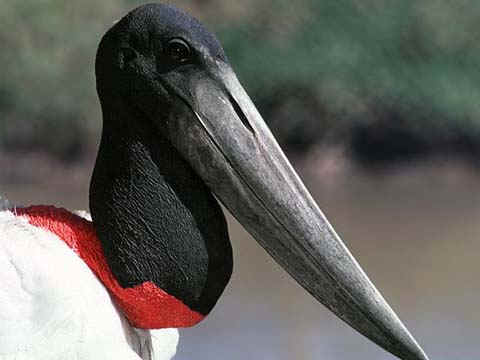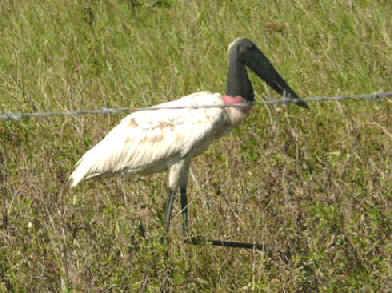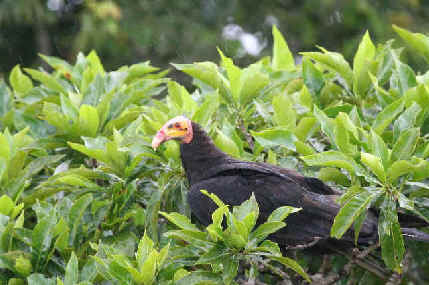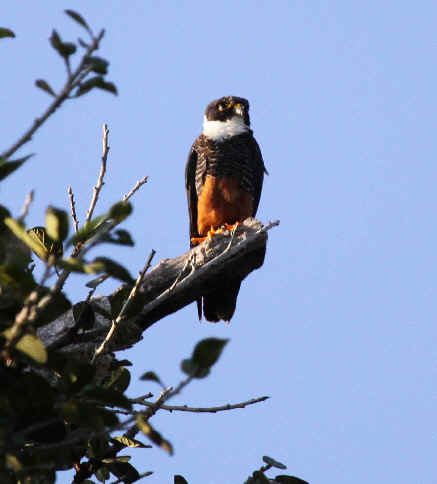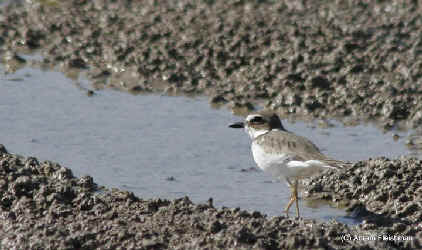 MEXICO
BIRDS
MEXICO
BIRDS
Tinamous to Shorebirds
those found during
Focus On Nature Tours
noted with an (*)
Part 1 of a List of Mexico Birds,
with some photos,
compiled by
Armas Hill
PHOTO AT UPPER RIGHT: a ROSEATE SPOONBILL
photographed during a FONT tour
Links:
Part
#2 of this list of Mexico Birds: Jaegers to Woodpeckers
Part
#3 of this list of Mexico
Birds: Manakins to Buntings
ALSO IN
PART 3: Pelagics, Vagrants & Rarities, Hypotheticals, and
Extinct Birds or those presumed to be so.
Cumulatively, there have been 12 FONT birding & nature tours in Mexico.
Codes:
a globally threatened or rare species,
designated by Birdlife International.
(t1): critical (t2): endangered (t3): vulnerable
(nt): a near-threatened species globally.
(i): an introduced species.
The birds in the list below are coded as to their status IN MEXICO:
(MX1): endangered
(MX2): threatened
(MX3): of special concern (or near threatened)
(MXe): a species endemic to Mexico
(ph): species with a photo in this FONT web-site
In the list that follows, relating to sightings during FONT tours, the
Mexican region & the months are noted.
BC: in Baja California
CZ: on Cozumel Island
SN: in Sonora
YP: on & near the Yucatan Peninsula
lower-case letters indicate that the species occurs in the region, but not found
(yet) during a FONT tour
A fine book, "Jungle of the
Maya" has recently been published (in 2006) by the University of Texas
Press. In it, there some very good photographs of wildlife in Belize, and in
nearby Guatemala & Mexico. In the following lists, pages in that book with
photos of particular species are referred to with a (p. xx)
Links:
Upcoming
FONT Birding & Nature Tours in Central America & Mexico
Birds of Cozumel Island, Mexico
Birds of Sonora, Mexico
Birds of the Yucatan region of Mexico
Mammals of
Mexico (with
some photos)
Amphibians & Reptiles of
Mexico (with
some photos)
Butterflies
of
Mexico (with some photos)
Marine Life of the
Yucatan, Mexico (with some photos)
Directory
of Photos in this Website

Bird-List:
- Great Tinamou (nt) (MX3) (*) ______
YP:nov,jun
Tinamus major
Tinamus m. robustus (subspecies in southeast Mexico)
Tinamus m. percautus (subspecies in southern Mexico)
- Little Tinamou (MX3) (*) ______
Crypturellus soui
- Slaty-breasted Tinamou (MX3) (*) ______
YP:mar,nov,jun
Crypturellus boucardi
Another name for Crypturellus bouccardi
has been the "Boucard's Tinamou".
- Thicket Tinamou (*) ______
YP:mar,nov,jun
Crypturellus cinnamomeus
(6
subspecies in Mexico)
- Plain Chachalaca (*) (ph) ______ YP:mar,nov,jun
Ortalis vetula
Ortalis v. pallidventris (subspecies endemic to northern Yucatan)
Ortalis v. intermedia (subspecies in the southern Yucatan)

Plain Chachalaca
(photo by Dick Tipton)
- Rufous-bellied Chachalaca ______ (MXe)
sn
Ortalis wagleri
The Rufous-bellied Chachalaca has been called the "Wagler's
Chachalaca". It was conspecific with the West Mexican Chachalaca
(below).
- West Mexican Chachalaca (*) ______ (MXe)
Ortalis poliocephala
- White-bellied Chachalaca (MX3) ______
Ortalis leucogastra (monotypic)
- Crested Guan (MX2) (*) (ph) ______
YP:nov
(p. 47)
Penelope purpurascens

A Crested Guan photographed during a FONT tour
(photo
by Marie Gardner)
- Highland Guan (t3) (MX2) ______
Penelopina nigra
- Horned Guan (t2) (MX1) (ph) ______
Oreophasis derbianus (monotypic, and the single member of its
genus)
The global population of the Horned Guan was estimated to be
less than 1,000 birds in the 1970s. It is said to have declined
since.

Horned Guan
(This photo was taken during a FONT
tour in Guatemala)
- Great Curassow (t3) (MX2) (*) ______
cz YP:jun,nov
(p. 47)
Crax rubra
Crax r. griscomi (very rare subspecies endemic to Cozumel Is.)
(MX1) _____
Crax r. rubra
(subspecies elsewhere in its range) _____
- Long-tailed Wood Partridge
(MX3) _____
Dendrortyx macroura
- Bearded Wood Partridge (t3)
(MX1) ______ (MXe)
Dendrortyx barbatus
- Buffy-crowned Wood Partridge
(MX2) ______
Dendrortyx leucophyrs
- Spotted Wood Quail (MX3) ______
Odontophorus guttatus (monotypic)
- Singing Quail ______ (MX3)
Dactylortyx thoracicus dolichonyx
(the single member of its
genus)
- Montezuma Quail (*) _____ (MX3)
SN:jan
Crytonyx montezumae
Crytonyx m. mearnsi (has been called "Mearn's Quail"; this
subspecies in northwest Mexico & southwest US) _____
Crytonyx m. montezumae (north & central Mexico) _____
Crytonyx m. merriami (on Mt. Orizaba in Veracruz) _____
Crytonyx m. sallei ("Salle's Quail", in southwest Mexico)
_____ (MX2)
Crytonyx m. rowleyi (in Oaxaca; this subspecies described in 1966)
_____
- Ocellated Quail (nt) ______ (MX2)
(closely related to Montezuma
Quail, Cytonyx montezumae, of North America)
Cytonyx ocellatus (monotypic)
- Northern Bobwhite (*) ______
Colinus virginianus (with 15 subspecies; more in Mexico than for any
other bird)
Colinus v. ridgwayi "Masked Bobwhite" ______ (MX1)
sn
- Yucatan Bobwhite (*) ______
YP:mar,jun,nov,dec
(has
also been called Black-throated Bobwhite)
Colinus nigrogularis (3 of the 4 subspecies are in Mexico; the other
in Guatemala & Honduras)
- Banded Quail (*) _____
Philotyx fasciatus (monotypic, and the single member of its
genus)
- Scaled Quail _____ sn
Callipepla squamata
- Elegant Quail (*) _____ (MXe)
SN:jan.sep (has been called
"Douglas Quail")
Callipepla douglasii
- Gambel's Quail (*) _____ SN:jan.aug,sep
Callipepla gambelii
- California Quail _____ bc
Callipepla californica
- Mountain Quail _____ bc
Oreortyx pistus
- Ocellated Turkey (*) (ph) ______ (nt)
(MX2) YP:mar,jun,nov
(p. 12 & 117)
Meleagris ocellata (monotypic)

An Ocellated Turkey photographed during a FONT tour
(photo by Marie Gardner)
- Wild Turkey (*) (ph) _____ (MX3)
SN:jan,sep
Meleagris gallopavo
Meleagris g. gallopavo (this subspecies in west-central Mexico, the
nominate described by Linneas in 1758) _____
Meleagris g. intermedia (northeast Mexico)
Meleagris g. merriami (northwest Mexico & southwest US)
Meleagris g. mexicana (northwest & north-central Mexico; this
subspecies known as the "Gould's Wild Turkey", with rectrices and
upper tail coverts tipped with white rather than cinnamon or buff) (SEE
PHOTO OF FEATHER BELOW)

A feather of a "Gould's Wild Turkey" found during the FONT tour
in Sonora, Mexico in September 2008
(photo by Doris Potter)
- Fulvous Whistling Duck _____
sn (another
name has been Fulvous Tree Duck)
Dendrocygna bicolor
- Black-bellied Whistling-Duck (*)
(ph) ______ CZ:mar,jun
sn YP:jun,nov
Dendrocygna a. autumnalis
The Black-belled Whistling Duck has been called the Black-bellied
Tree Duck.

Black-bellied Whistling Ducks photographed on Cozumel
Island during the FONT March 2009 Mexico Tour
(photo by Marie Gardner)
- Tundra Swan ______ (MX1)
Cygnus columbianus
- Greater White-fronted Goose _____ sn
(was called White-fronted Goose)
Anser albifrons
- Snow Goose _____ sn
Chen
(formerly Anser) caerulescens
- Ross's Goose _____ sn
Chen
(formerly Anser) rossii
- Brant Goose (*) _____ (MX2)
SN:jan
(has
been simply "Brant", or "Black Brant")
Branta bernicla nigricans
- Canada Goose _____ sn
Branta canadensis
- Cackling Goose _____ sn
Branta hutchinsii
- Muscovy Duck ______ (MX1)
yp
Cairina moschata (monotypic,
and the single member of its genus)
- Wood Duck (ph) _____
Aix sponsa
- Green-winged Teal (*) (ph) _____ SN:jan
Anas carolinensis
- Mallard (ph) _____ sn
Anas platyrhynchos
- Mexican Duck (*) _____ (MX2)
SN:jan,aug,sep (was
considered conspecific with the Mallard)
Anas diazi
- Mottled Duck (*) ______ (MX2)
Anas fulvigula
- Northern Pintail (*) (ph) _____
cz sn
Anas acuta
- Blue-winged Teal (*) (ph) ______
CZ:mar,dec sn YP:mar,nov
Anas discors (monotypic)
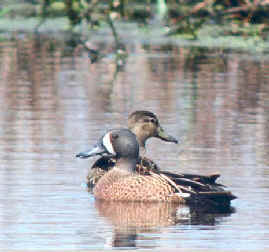
Blue-winged Teal
- Cinnamon Teal (*) _____ sn
Anas cyanoptera
- Northern Shoveler (*) (ph) _____ SN:jan
YP:nov
Anas clypeata
- Gadwall (*) (ph) _____
SN:jan,aug
Anas strepera
- American Wigeon (*) ______
sn
Anas americana (monotypic)
- Canvasback (*) _____ sn
Aythya valisineria
- Redhead _____ sn
Aythya americana
- Ring-necked Duck (*) _____ cz
SN:jan
Aythya collaris
- Greater Scaup _____ bc
sn
Aythya marila
- Lesser Scaup (*) (ph) _____ cz
SN:jan yp
Aythya affinis
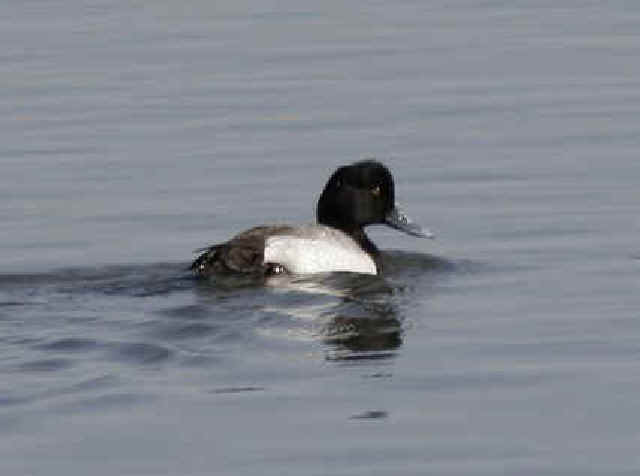
A male Lesser Scaup photographed in Mexico.
There are 2 species of scaup. The Lesser Scaup occurs only in the New
World.
(photo by Abram Fleishman)
- Black Scoter _____ bc
Melanitta americana
The Black Scoter was conspecific with the Common Scoter, Melanitta
nigra, of Europe.
- Surf Scoter ______ bc
SN:jan
Melanitta perspicillata
- White-winged Scoter _____
bc sn
Melanitta deglandi
The White-winged Scoter was conspecific with the Velvet
Scoter, Melanitta fusca, of Europe.
- Common Goldeneye _____ sn
Bucephala clangula
- Bufflehead (*) _____
SN:jan
Bucephala albeola
- Hooded Merganser _____ sn
Lophodytes
(formerly Mergus) cucullatus
- Common Merganser _____ sn
Mergus merganser americanus
- Red-breasted Merganser (*) _____
cz SN:jan
Mergus serrator
- Ruddy Duck (*) _____
SN:jan
Oxyura jamaicensis
- Masked Duck ______ (MX2) cz
yp
Nomonyx (formerly Oxyura) dominicus
- Red-throated Loon _____ bc
Gavia stellata
- Pacific Loon (*) _____ bc
SN:jan
Gavia pacifica
- Common Loon (*) _____ bc
SN:jan
Gavia immer
- Black Storm Petrel (*)
_____ SN:aug
Oceanodroma melania
- Least Grebe (MX3) (*) (ph) ______ (MX3)
CZ:mar,jun
SN:jan,aug
YP:mar,jun,nov
Tachybaptus dominicus brachypterus

Least Grebe
(photo by Howard Eskin)


 MEXICO
BIRDS
MEXICO
BIRDS












